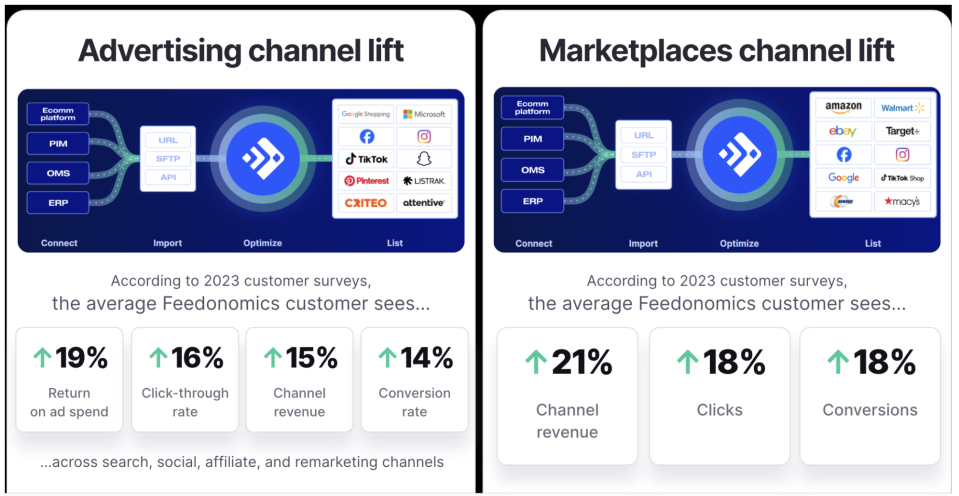Fashion’s Unexpected Fast Track: Top Trends Driving Surprising Retailer Success

The fashion and retail e-commerce sector is outperforming 2024 projections, creating substantial opportunities for retailers for the remainder of the year. In the U.S. alone, revenue from the online sale of fashion and apparel, footwear and accessories is expected to surpass $145 billion. Apparel and accessories lead the U.S. e-commerce market, representing more than 19 percent of total retail e-commerce sales. This market is projected to expand at a compound annual growth rate of 9.4 percent, reaching more than $1 billion by the end of 2027.
Such impressive figures are further corroborated by the latest customer data from BigCommerce’s 2024 Global E-commerce Report: Fashion and Apparel, which shows a global increase in gross merchandise value (GMV) of 10.7 percent, driven by a 7.2 percent rise in orders. Additionally, the average order value globally saw a 3.23 percent increase, from $160 in the first quarter of 2023 to $165 in the first quarter of 2024.
More from WWD
Are Luxury Fitness and Sports Recovery Destinations Replacing Spas?
Galeries Lafayette Revamps Its Luxury Offering, Returns to Pre-pandemic Sales, Traffic Numbers
Also notable in the report is the fashion sector’s staggering growth in EMEA and APAC. EMEA experienced a 25.6 percent surge in GMV coupled with a whopping 41.3 percent increase in the number of orders, while APAC saw an equally impressive 24.6 percent rise in GMV fueled by a 24.3 percent increase in the number of orders.
Seizing the Moment With Top Four E-commerce Fashion Trends
Given that customers are exceeding purchase projections, there has never been a better time for fashion retailers to reassess and enhance their e-commerce strategies. Here are the top four trends, all focused on creating a customer-centric experience:
1. Implementing a Seamless Checkout Experience
Minimizing checkout friction is key to maximizing conversions. By simplifying and accelerating the payment steps, businesses can reduce cart abandonment rates and foster a more seamless shopping experience for their customers. In fact, Cornell University research indicates that customers using one-click checkout services increase their spending by an average of 28.5 percent.
For online brands and retailers, revenue growth hinges on two critical conversion points — checkout conversion rate and visit conversion rate — and offering alternative payment options such as PayPal Wallet, ApplePay or Stripe. A recent independent study from Incisiv revealed customers using BigCommerce’s native one-page checkout and either PayPal Wallet or Apple Pay yielded a 58.9 percent checkout conversion rate versus 52.9 percent without. Since the release of the report, the e-commerce platform’s flagship checkout visit conversion rate has increased from 2.33 percent to 2.67 percent, continuing to perform well above the conversion rate industry average of 1.94 percent.
Take BigCommerce customer Rohan, a U.K.-based outdoor and travel clothing brand as an example. Rohan has significantly improved its checkout experience through its partnership with leading payment provider Stripe. Stripe’s optimized checkout suite, featuring the embeddable Payment Element that supports more than 40 payment methods, and Stripe Radar for fraud detection, led to a 6.5 percent increase in Rohan’s online customers in just two months.
Every touchpoint of the checkout process is evolving with new efficiencies, and fashion retailers should continue incorporating these advancements to capitalize on the current market upswing.
2. Improving the Post-purchase Experience
Consumers now expect a superior post-purchase experience, including fast shipping, detailed delivery updates and simple return policies. In fact, two of the primary reasons for cart abandonment among online shoppers are expensive shopping costs and long delivery times.
By implementing services like buy online, pick up in store (BOPIS) and buy online, return in store (BORIS), brands can significantly enhance customer experience, reduce cart abandonment due to high shipping costs and create opportunities for upselling or cross-selling when customers visit a physical store. With most shoppers aware of BOPIS, the model is only expected to grow, as shown by the 19.4 percent increase in the U.S. BOPIS retail sales in March 2024.
Leveraging BigCommerce agency partner Rusty Monkey, Rohan launched a customized BOPIS integration tailored to its one-click checkout experience. Customers can easily navigate the BOPIS process using a shop locator map that displays the nearest stores based on zip code or city, along with store details, directions, contact information and hours of operation. Additionally, the delivery information page clearly outlines each step of the pickup process, including pricing and typical wait times providing a level of transparency and ease universally desired by shoppers.
3. Leveraging AI for Enhanced Personalization
AI and machine learning are essential tools for delivering personalized shopping experiences. Studies show that 92 percent of companies utilize AI-driven personalization to drive growth, and 56 percent of consumers are more likely to become repeat buyers when offered personalized shopping experiences.
Brands can use AI to offer personalized product recommendations and pricing, which can accelerate purchase decisions. For example, BigCommerce’s BigAI Copywriter leverages generative AI large language modeling to draft effective SEO-optimized product descriptions to attract and convert shoppers into loyal customers. Once a brand is in front of the right customers, companies like RecCommerce, a BigCommerce technology partner, can generate personalized upsell and cross-sell opportunities based on customer preferences.
In the fashion industry, where individual style and fit preferences are paramount, leveraging AI for personalization is especially crucial for meeting customer expectations and driving brand loyalty.
4. Creating a Unified Omnichannel Experience
Shopping habits are undergoing a major shift, with customers frequently viewing the same product across multiple channels — in-store, on third-party marketplaces, brand websites and via social media — before making a purchase decision. A study by Capital One revealed that not only are 73 percent of consumers omnichannel shoppers, but retailers using three or more channels experience 251 percent higher consumer engagement than those using only one.

For fashion retailers, prioritizing a unified omnichannel experience is crucial. This strategy involves meeting customers where they are, such as marketplaces, social media and physical stores, enhancing the overall shopping experience and driving higher engagement.
If managing multiple channels feels overwhelming, product feed management tools like Feedonomics, a BigCommerce subsidiary, can assist fashion brands and retailers by syncing product and catalog data across hundreds of channels, saving time and enhancing discoverability.
Some retailers are taking it a step further by implementing omnichannel-centric creative tactics, such as experiential loyalty programs, to boost customer engagement. According to Statista, not only are customers already opting into loyalty programs, but an astounding 50 percent of U.S. shoppers surveyed said they were likely to increase their participation in such programs.
Francesca’s, a boutique clothing chain with more than 400 stores, exemplifies innovative methods to connect customers with its brand. Its popular FranClub loyalty program bridges the omnichannel gap by offering digital perks and hosting in-person events for members, thereby strengthening connections and boosting sales.
With sales exceeding expectations, fashion brands and retailers are in an ideal position to capitalize on the current market momentum. By ensuring an accelerated checkout process, enhancing the post-purchase experience, leveraging AI for personalization and creating a unified omnichannel experience, brands and retailers in this sector can position themselves for sustained success.
Meghan Stabler is senior vice president of marketing at BigCommerce.
Best of WWD


